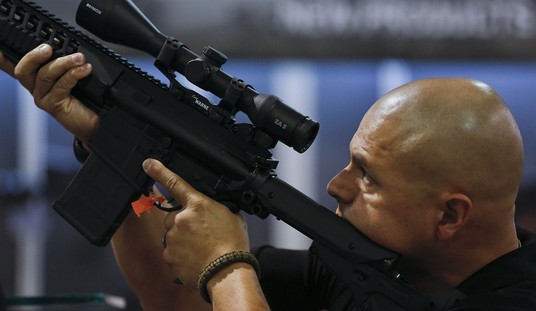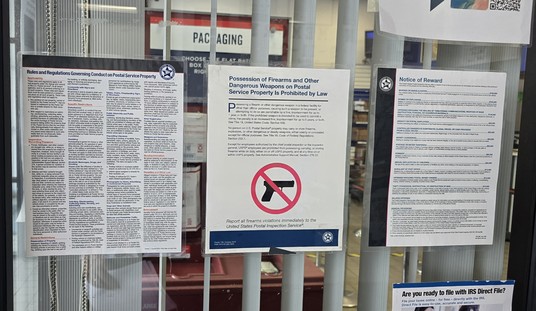Michael Cargill is a man on a mission; not only to take down the ATF's ban on bump stocks, but to curb the ATF's rulemaking abuses. Cargill sat down with me this morning before heading off to Washington, D.C., where the Supreme Court will hear oral arguments in Garland v. Cargill on Wednesday, and explained why this case is crucially important to every gun owner in the country... and not just those who lawfully purchased and possessed an item that the ATF suddenly declared was a felony to own.
"I turned mine in to the ATF, and then the same day we filed our lawsuit in federal court," Cargill shared. "The scary thing about all this is that they used that framework, the bump stock wording to say 'hey, we're going to ban the bump stock' and then they removed that term and inserted the brace [pistol stabilizing brace], they inserted triggers. They used that same document, just remove one word and insert another word to ban other parts and items that they wanted to ban. They just went crazy with it, because we gave them that inch and they took it a mile."
If they can get away with doing it to bump stocks, the ATF and the Biden administration are more likely get away with their continued abuses of the Administrative Procedures Act; not only for rules they've already promulgated but in order to enact even more gun control laws without a vote in Congress.
For Cargill, this isn't just a fight over a product that he believes should be legal to own, but a direct challenge to the ATF's overreach. Under the federal definition of a machine gun, the firearm in question must automatically fire more than one shot by a "single function" of the trigger. Guns equipped with bump stocks still fire a single round with every pull of the trigger, but the ATF maintains that rifles modified with bump stocks "satisfy that requirement because they enable the shooter to initiate a continuous firing cycle in response to a 'single pull of the trigger' or an analogous motion."
Even that characterization is disputed by Cargill and his attorneys, who argue that rifles equipped with bump stocks still require the trigger to reset for each shot, and that no second shot will fire "unless the shooter takes additional steps beyond the initial pull of the trigger." I've shot a gun equipped with a bump stock, and I can attest firsthand that the gun doesn't fire rapidly unless, as Cargill's team asserts, the user is "actively engaged in forward pressure with the non-trigger hand on the fore-end of the rifle while maintaining the trigger fingeron the device’s ledge with constant rearward pressure.” You can't simply slap a bump stock on a rifle and expect that it's going to fire rapidly. The user plays an integral role in increasing the rate of fire.
The federal courts of appeals have split on whether a "single function" and a "single pull" of the trigger are essentially the same, with the Fifth Circuit Court of Appeals issuing an en banc decision in which 8 of the 16 judges who heard the case agreed that bump stocks don't turn rifles into machine guns and 11 of the judges decided that, if nothing else, the federal definition of a machine gun section is ambiguous as applied to bump stocks and that the rule of lenity requires that the statute be construed against the government.
It's that Fifth Circuit decision that Attorney General Merrick Garland asked the Supreme Court to address, and at this point it's an open question as to where the Court will come down. Cargill says he'll be paying close attention to the questions posed by the justices during Wednesday's oral argument to see if he can glean any inkling of the positions of those on the bench, especially Chief Justice John Roberts, who seems to have become something of a swing vote on the Court when it comes to gun-related issues.
The Court won't be streaming the arguments in real time, but audio of the hearing should be available here at some point on Wednesday afternoon. I'll be listening closely as well, and I'm curious to hear how hard justices press the Solicitor General to explain how a "function" of the trigger is the same as a "pull" when there's a distinct difference between the two.
I doubt the political motivation behind the ATF's sudden reversal on the legality of bump stocks will be a major topic of discussion tomorrow, but I hope that it's at least mentioned from the bench given the motivation for the ATF's sudden decision to outlaw possession and sale of the devices. The murders in Las Vegas that prompted the Trump administration to move on bump stocks, as horrific as they were, still doesn't give the executive branch the authority to create new law. That's the role of Congress, and if lawmakers wanted to revisit the federal definition of a machine gun they could have. Legislative inaction is not an excuse for executive branch overreach, and that's exactly what happened when the ATF took it upon itself to decide that the words "function" and "pull" can be used interchangeably.
SCOTUS has a chance to set things right, but it could also open the door to even more assaults on our right to keep and bear arms if they greenlight the ATF's bump stock ban. Now's the time for the Supreme Court to curb the agency's overreach. Check out the entire conversation with Michael Cargill in the video window below, and let's hope that the justices see it his way when they take up Garland v. Cargill tomorrow.









Join the conversation as a VIP Member